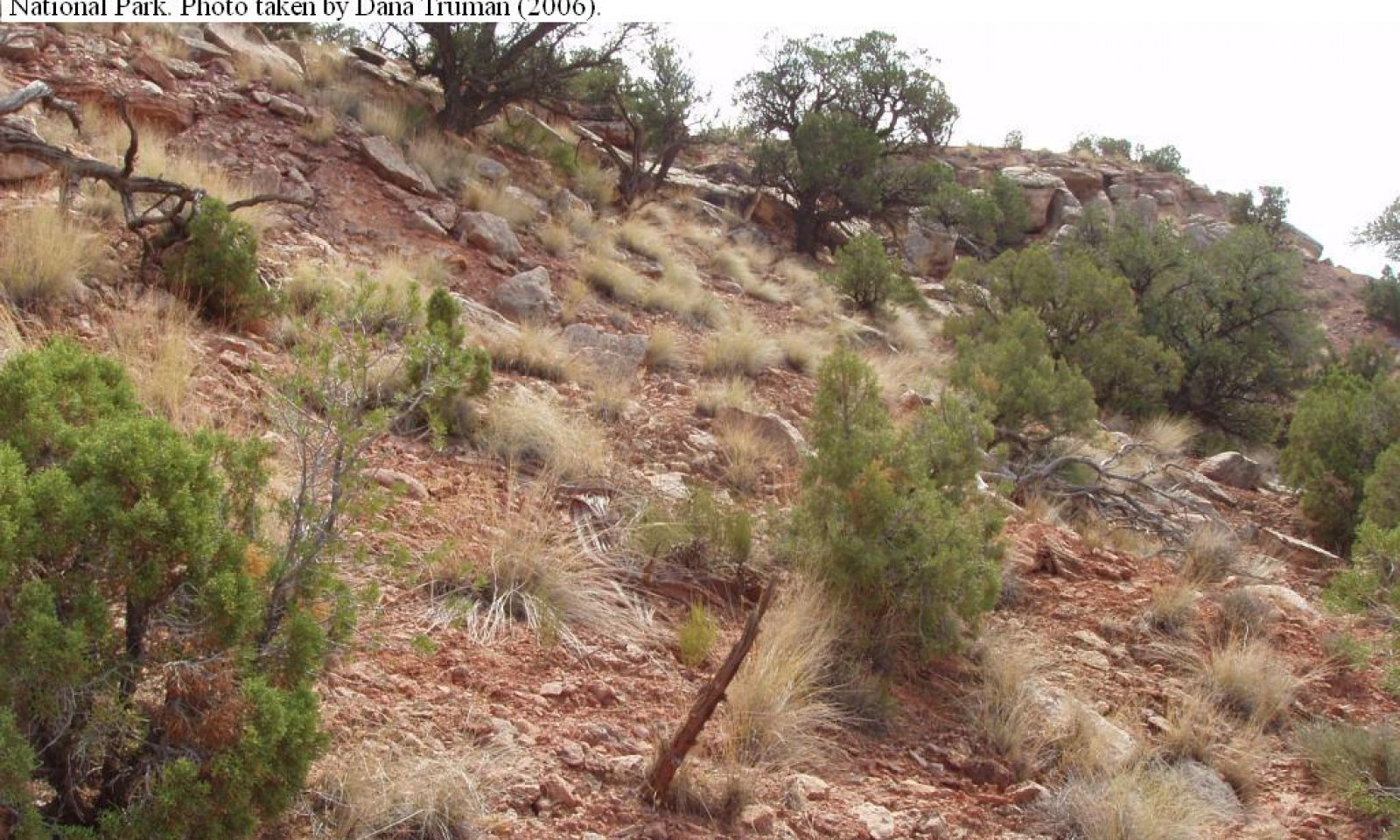
Semidesert Very Steep Stony Loam (Salina Wildrye)
Scenario model
Current ecosystem state
Select a state
Management practices/drivers
Select a transition or restoration pathway
- Transition 1 More details
-
No transition or restoration pathway between the selected states has been described
Target ecosystem state
Select a state
Description
The reference state was determined by documenting rangeland relic areas that have been protected from excessive disturbance, such as grazing and recreation. Historical accounts were also considered.
The reference state represents the natural range of variability in the plant community dynamics of this ecological site. This state includes the biotic community that can establish on the ecological site if all successional sequences were completed under the present environmental conditions, without interferences by man; natural disturbances are inherent in its development. This state is dominated by native perennial warm season and cool season grasses, shadscale, and native annual and perennial forbs. Perennial warm and cool season grass composition depends primarily on slope aspect or soil moisture content. If present, Utah juniper is sparse and most common under relatively moist soil conditions (usually north-facing slopes). Soil moisture is the most important driver of plant community change in this state. When natural disturbances occur, the rate of recovery is relatively rapid due to niches being filled with highly adapted native vegetation.
Submodel
Description
This state is very similar to the reference state in nutrient cycling and disturbance regime; however it now includes invasive plant species, particularly cheatgrass. This state is dominated by native perennial warm and cool season grasses, shadscale, and native annual and perennial forbs. Invasive plants are present but not dominant. Perennial warm and cool season grass composition depends primarily on slope, aspect and soil moisture. If present, Utah juniper is sparse and most common under relatively moist soil conditions (usually north and east-facing slopes). Soil moisture is the most important driver of plant community change in this state. This state has lower resistance to disturbances and resilience after disturbance than the reference state. Invasive plants are beginning to fill the niches and establish on the site.
Submodel
Mechanism
This transition occurs when cheatgrass and/or other invasive plant species are dispersed to the site and allowed to germinate, establish and reproduce on site. Events triggering this transition may include improperly managed livestock grazing or recreational activities that disperse non-native seeds to safe microsites that are suitable for establishment of the invaders. Invasive species are also known to establish in undisturbed native plant communities due to their ability to adapt and compete with native vegetation. Eradication of these species once established is considered infeasible.
At-risk Community Phase – All communities are at risk of invasive plant establishment.
Trigger – Dispersal, germination and establishment of invasive species.
Model keys
Briefcase
Add ecological sites and Major Land Resource Areas to your briefcase by clicking on the briefcase (![]() ) icon wherever it occurs. Drag and drop items to reorder. Cookies are used to store briefcase items between browsing sessions. Because of this, the number of items that can be added to your briefcase is limited, and briefcase items added on one device and browser cannot be accessed from another device or browser. Users who do not wish to place cookies on their devices should not use the briefcase tool. Briefcase cookies serve no other purpose than described here and are deleted whenever browsing history is cleared.
) icon wherever it occurs. Drag and drop items to reorder. Cookies are used to store briefcase items between browsing sessions. Because of this, the number of items that can be added to your briefcase is limited, and briefcase items added on one device and browser cannot be accessed from another device or browser. Users who do not wish to place cookies on their devices should not use the briefcase tool. Briefcase cookies serve no other purpose than described here and are deleted whenever browsing history is cleared.
Ecological sites
Major Land Resource Areas
The Ecosystem Dynamics Interpretive Tool is an information system framework developed by the USDA-ARS Jornada Experimental Range, USDA Natural Resources Conservation Service, and New Mexico State University.






